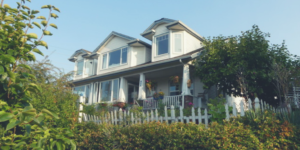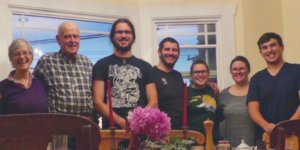I enjoyed offering a Futures/Creativity Workshop at First Christian Reformed Church in Grand Rapids last March.
As I was leaving the Workshop Pastor Randy Buursma shared “that First CRC Church has always been a “two-fer” congregation.” I asked “what does that mean?”
Randy said “several years ago when I first came to the church being a ‘two-fer’ meant members attending Sunday morning and Sunday night.” He added, “Now it means members attending twice a month.”
Randy’s experience is not unique. I am finding over the past decade more and more established evangelical and mainline churches have also been experiencing a sharp decline in attendance.
The Problem of “The Drip”
As American Christians become more affluent not only is their attendance declining, so is their annual giving.
According the State of Church Giving 2015. Sampling 11 of the major American protestant denominations their members gave 3.02% of their income in 1968 and only 2.17% in 2015.
Even more concerning is these members and their congregations gave even a smaller share to neighbors in need. In 1968 these churches gave 64% of their giving to benevolence as compared to only 34% in 2015.
Research show members in established evangelical and mainline congregations also have less time to volunteer to reach out to those in need.
How long can reduced participation and giving continue in evangelical and mainline churches before the vitality of congregations disappear?
How Do We Fix “The Drip”?
For this blog I suggest that some of us who are older can help fix the drip before it begins by supporting Gen Next as they launch!
Young leaders who are planting new churches and seeking to make a difference are often facing even more daunting challenges than established churches.
Recently we were fortunate to have JR Woodward, from The V3 Movement, meet with church planters in our home. He provided some very helpful insights, based on discipleship models in early Methodism, to enable members in these new plants to be better stewards of both their time and money as followers of Jesus.
I am encouraged to find that many older leaders, in our established churches, want to find ways to support the young starting these new church plants. However, I find that few of them recognize how much more difficult for this generation to launch economically than when many of us got started.
The Struggle
First, millennials are saddled with much higher school debt than older generations. School debt is averaging almost $40,000 for recent college grads. Some seminary grads I have met recently, that want to plant churches, are carrying over $100,000 in college and seminary debt.
Second, housing costs take a much higher percentage of total income for millennials than they ever did for Boomers or Xers.
Offering Hope and Help
My wife Christine and I are enjoying experimenting with one alternative housing model to help a new generation launch, plant churches and make a little difference in times like these as a way to help overcome these struggles.
Over 20 years ago Christine and I bought an old house built in 1910 here in Seattle that was divided into three separate flats to experiment in inter-generational living which we call the Mustard Seed House.
We offer reduced rent. Every week we share a meal, check-in time and prayer once a week and seek to be mutually supportive. We also garden together once a month, enjoy the produce and enjoy sharing in hospitality with friends as well.
Our top floor is a three bedroom flat. Trevor and Hilary and their two young sons live there. They are very invested in church planting here in Seattle. Christine and I live in the middle floor which is a two bedroom apartment with our pup Goldie. Dan & Lisa live in our basement unit which is a one bedroom flat. They are also involved in the church plant with Trevor and Hilary. We enjoy learning from them.
Finally, Luke, a recent grad from Seattle School of Theology and Psychology, also lives in a separate unit in the basement that we call our “monk’s cell” that has it’s own bath. Luke is an active member at an ElLCA innovative congregation that also attracts a lot of younger Christians here in Seattle called Church of the Apostles.
I share what we are living into as one way those of us who are older followers of Jesus can both reduce the drip and increase our investment in growing the church. Opening our homes to a new generation of change makers in times like these can be a valuable contribution to the kingdom!
We would be happy to email you a copy of our community contract at Mustard Seed House and answer any of your good questions. Feel free to reach out: twsine@gmail.com
We would also be interested in any ideas you have come up with to SUPPORT A NEW GEN OR REDUCE THE DRIP IN CHURCH PARTICIPATION IN TIMES LIKE THESE!
Share this Post



